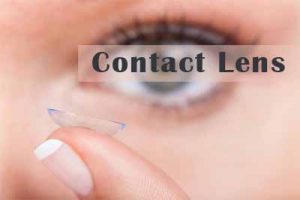- Home
- Editorial
- News
- Practice Guidelines
- Anesthesiology Guidelines
- Cancer Guidelines
- Cardiac Sciences Guidelines
- Critical Care Guidelines
- Dentistry Guidelines
- Dermatology Guidelines
- Diabetes and Endo Guidelines
- Diagnostics Guidelines
- ENT Guidelines
- Featured Practice Guidelines
- Gastroenterology Guidelines
- Geriatrics Guidelines
- Medicine Guidelines
- Nephrology Guidelines
- Neurosciences Guidelines
- Obs and Gynae Guidelines
- Ophthalmology Guidelines
- Orthopaedics Guidelines
- Paediatrics Guidelines
- Psychiatry Guidelines
- Pulmonology Guidelines
- Radiology Guidelines
- Surgery Guidelines
- Urology Guidelines
FDA clears first Photochromatic contact lens

The U.S. Food and Drug Administration has cleared the first F Photochromatic contact lens,a lens with an additive that automatically darkens the lens when exposed to bright light. The Acuvue Oasys Contact Lenses with Transitions Light Intelligent Technology are soft contact lenses indicated for daily use to correct the vision of people with non-diseased eyes who are nearsighted (myopia) or farsighted (hyperopia). They can be used by people with certain degrees of astigmatism, an abnormal curvature of the eye.
The National Eye Institute at the National Institutes of Health estimates that 42 percent of Americans aged 12 to 54 have myopia and 5 to 10 percent of all Americans have hyperopia. The Centers for Disease Control and Prevention estimates that as of 2014, more than 40 million Americans were contact lens wearers.
“This contact lens is the first of its kind to incorporate the same technology that is used in eyeglasses that automatically darken in the sun,” said Malvina Eydelman, director of the Division of Ophthalmic, and Ear, Nose and Throat Devices at the FDA's Center for Devices and Radiological Health.
The contact lenses contain a photochromic additive that adapts the amount of visible light filtered to the eye based on the amount of UV light to which they are exposed. This results in slightly darkened lenses in bright sunlight that automatically return to a regular tint when exposed to normal or dark lighting conditions.
For today’s clearance, the FDA reviewed scientific evidence including a clinical study of 24 patients that evaluated daytime and nighttime driving performance while wearing the contact lenses. The results of the study demonstrated there was no evidence of concerns with either driving performance or vision while wearing the lenses.
Patients with the following conditions should not use these contact lenses: inflammation or infection in or around the eye or eyelids; any eye disease, injury or abnormality that affects the cornea, conjunctiva (the mucous membrane that covers the front of the eye and lines the inside of the eyelids) or eyelids; any previously diagnosed condition that makes contact lens wear uncomfortable; severe dry eye; reduced corneal sensitivity; any systemic disease that may affect the eye or be made worse by wearing contact lenses; allergic reactions on the surface of the eye or surrounding tissues that may be induced or made worse by wearing contact lenses or use of contact lens solutions; any active eye infection or red or irritated eyes.
These contacts are intended for daily wear for up to 14 days. Patients should not sleep in these contact lenses, expose them to water or wear them longer than directed by an eye care professional. These contacts should not be used as substitutes for UV protective eyewear.
The Acuvue Oasys Contact Lenses with Transitions Light Intelligent Technology were reviewed through the premarket notification 510(k) pathway. A 510(k) is a premarket submission made by device manufacturers to the FDA to demonstrate that the new device is substantially equivalent to a legally marketed predicate device.
The FDA granted clearance of the Acuvue Oasys Contact Lenses with Transitions Light Intelligent Technology to Johnson & Johnson Vision Care, Inc.

Disclaimer: This site is primarily intended for healthcare professionals. Any content/information on this website does not replace the advice of medical and/or health professionals and should not be construed as medical/diagnostic advice/endorsement or prescription. Use of this site is subject to our terms of use, privacy policy, advertisement policy. © 2020 Minerva Medical Treatment Pvt Ltd